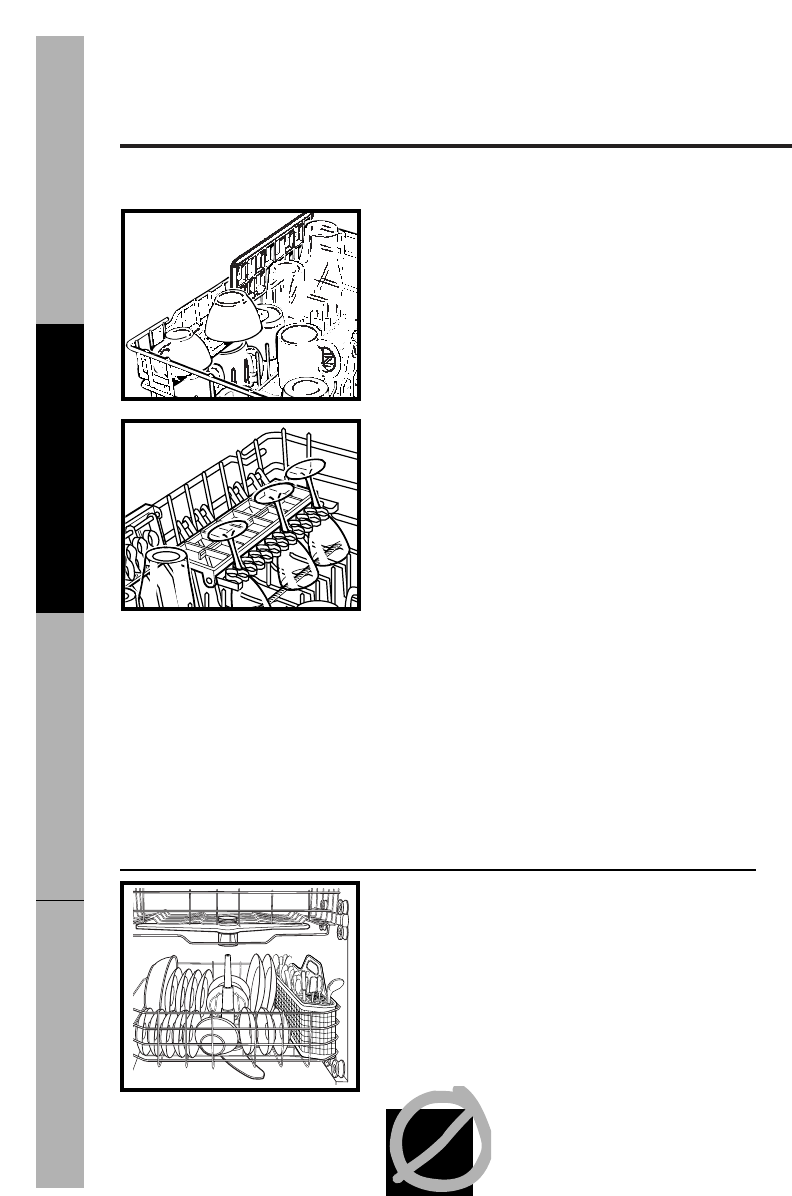
Safety InformationOperating InstructionsTroubleshooting TipsCustomer Service
Loading the dishwasher racks.
For best dishwashing results, follow these loading guidelines. Features and
appearance of racks and silverware baskets may vary from your model.
Upper Rack
Although the upper rack is for glasses, cups and
saucers, pots and pans can be placed in this rack
for effective cleaning. Cups and glasses fit best
along the sides. This is also a secure place for
dishwasher-safe plastics.
The cup shelf
(on some models) may be placed
in the up or down position to add flexibility.
A
wine glass holder
(on some models) secures wine
glasses at an angle for best washability. Because
wine glasses come in various sizes, after loading,
slowly push in the rack to make sure they will clear
the top of the dishwasher.
The upper rack is good for all kinds of odd-shaped
utensils. Saucepans, mixing bowls and other items
should be placed face down. Fold-down fingers
(on some models) provide flexibility for
extra-large and hard-to-fit items.
Secure larger dishwasher-safe plastics over two fingers
when possible.
Make sure small plastic items are secure so they can’t fall
onto the heater.
Be sure that items do not protrude through the bottom of
the rack and block rotation of the middle spray arm. This
could result in poor wash performance for items in the
upper rack.
Check to make sure that tall items will not block rotation of
the top wash arm.
The Wash Tower
Keep the center area clear in the lower rack.
The wash tower rises through the center of the lower
rack during the wash and rinse portions of the cycle.
The wash tower shoots water into the mid-level wash
arm located under the upper rack. Blocking the
wash tower could result in poor wash performance
for items in the upper rack.
Don’t block or load tall things next to the
Wash Tower.
14


















